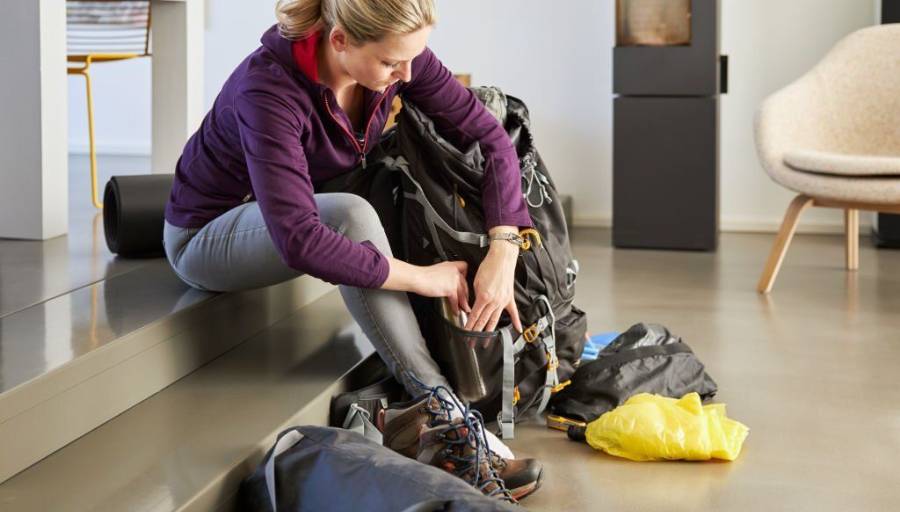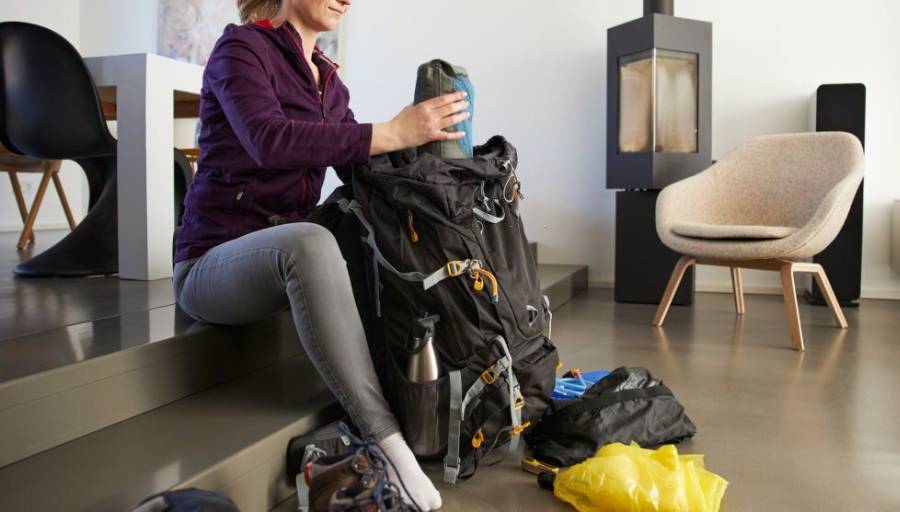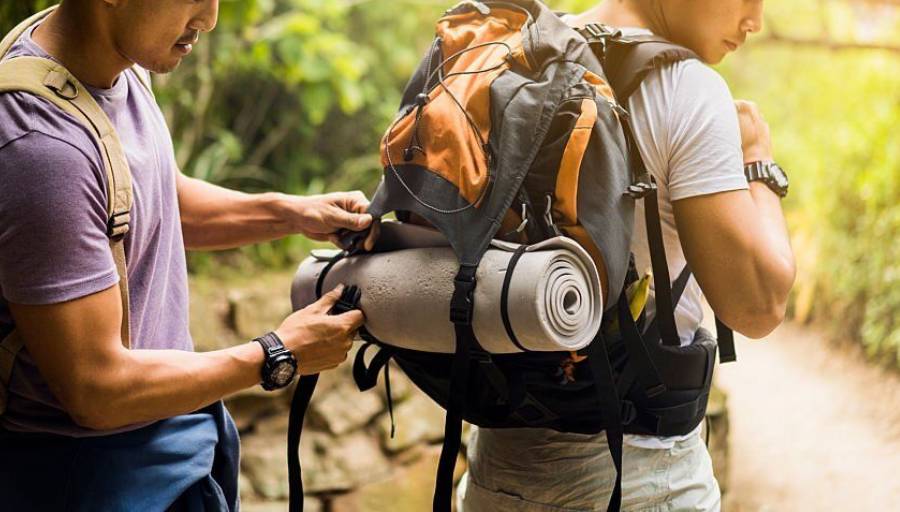
Whether you’re gearing up for an evening of camping, a multi-day adventure, or an extensive hike, allocating sufficient time for careful packing is essential. The purpose of this guide is to enlighten you on how to pack a backpack for hiking and organize your gear in such a way as to optimize your storage space while distributing the weight of your equipment as evenly as possible.
How to Pack a Backpack for Hiking
Without further delay, let’s see how to pack a backpack for hiking in 8 simple steps…
1. Decide What to Bring
Constrain yourself to the essentials. Adhere to the customary limit of not exceeding 15 kg of load. Keep in mind that the lighter your equipment, the more enjoyable your adventure will be!
2. Spread Out All Your Paraphernalia
Spread out all your gear and belongings. This visual approach assists in determining essential items and identifying what can be left behind. This will ensure a more informed packing decision.
3. Organize Your Gear Into Subgroups
Using small panniers and waterproof bags will help you bundle your gear and keep it dry. It’s up to you how you want to organize the storage of your clothes inside your bag. For example, you can use the backpack separately for your underwear, tops, pants, or group them by complete outfit for each day/night.
Rolling your clothes up compactly will help you save as much space as possible.
4. Put Away Your Heaviest Equipment First

Make sure the weight is evenly distributed in your pack. The heaviest items, such as your tent, stove, and water, should be placed low and as close to your back as possible. Check that no objects placed against your back protrude, otherwise your back will feel them and pain will result.
5. Store Your Medium-Duty Gear Second
Medium-weight gear, such as your sleeping bag or your heaviest clothes can be placed towards the bottom and middle of the bag. The bulkiest backpacks are most often equipped with a separate compartment located at the bottom of the bag, allowing storage of your sleeping bag. This compartment can also be useful for storing your spare shoes.
6. Store the Lightest Gear At the Top of the Bag
The lightest equipment, such as your gloves, caps, flashlights, and cards should be placed rather outside the bag or on top. Items that you want to have quick access to, such as your first aid kit, snacks, or waterproof clothing should also be placed near the top of the bag, or inside pockets.
7. Filling Pockets and Compartments
When filling the various pockets and various compartments, be sure to distribute the weight evenly. You don’t want to end up with all the weight on one side, which would throw you off balance considerably.
8. Attach Certain Objects to the Outside of Your Backpack
If you bring a camping mattress with you and it does not fit inside your backpack, you can attach it to the outside of your backpack. Ideally, it is advisable to attach it preferably vertically to your load, to minimize the risk of damage, especially when you put your bag on the ground.

Avoid attaching anything that you do not want to find wet, damaged or lost, on the outside of your backpack.
You now know how to prepare the loading of your hiking backpack. To maximize wearing comfort, make sure you fit it properly once on you and load it. Now Let’s see a short video tutorial:
Conclusion
As previously emphasized, while properly distributing the load in your backpack and maintaining balance are crucial for minimizing physical strain, it’s important to note that these practices are not miraculous solutions. If your bag is too heavy, you may suffer physical pain. This is why, before even thinking about the distribution of loads of your bag, you must try it.
Frequently Asked Questions
What is the ideal weight limit for a hiking backpack?
The recommended weight limit for a hiking backpack is typically around 15 kg. Staying within this limit ensures a comfortable and manageable load during your hiking adventures.
Can I exceed the weight limit if necessary?
It’s advisable to adhere to the suggested weight limit to prevent unnecessary strain on your body. Exceeding the limit may compromise your comfort and overall hiking experience.
Are there any miraculous solutions to prevent body trauma during hiking?
While proper load distribution and balance are essential, there are no miraculous solutions. It’s important to exercise caution and listen to your body to avoid unnecessary strain or injury.
What should I do to maximize wearing comfort once the backpack is loaded?
A: After loading your backpack, ensure optimal comfort by properly fitting it to your body. Adjust the straps, waist belt, and shoulder harness to achieve a secure and comfortable fit.